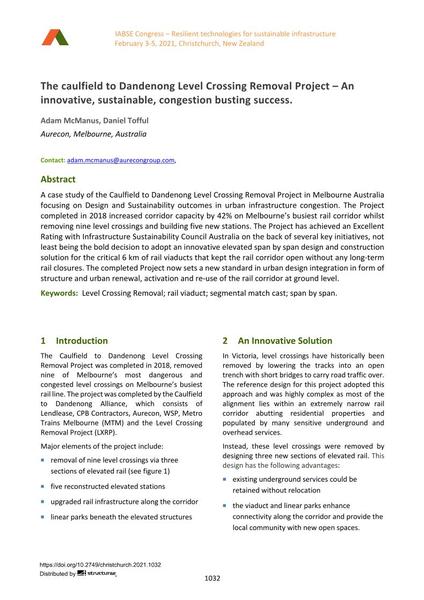The caulfield to Dandenong Level Crossing Removal Project – An innovative, sustainable, congestion busting success.

|
|
|||||||||||
Détails bibliographiques
| Auteur(s): |
Adam McManus
(Aurecon, Melbourne, Australia)
Daniel Tofful (Aurecon, Melbourne, Australia) |
||||
|---|---|---|---|---|---|
| Médium: | papier de conférence | ||||
| Langue(s): | anglais | ||||
| Conférence: | IABSE Congress: Resilient technologies for sustainable infrastructure, Christchurch, New Zealand, 3-5 February 2021 | ||||
| Publié dans: | IABSE Congress Christchurch 2020 | ||||
|
|||||
| Page(s): | 1032-1039 | ||||
| Nombre total de pages (du PDF): | 8 | ||||
| DOI: | 10.2749/christchurch.2021.1032 | ||||
| Abstrait: |
A case study of the Caulfield to Dandenong Level Crossing Removal Project in Melbourne Australia focusing on Design and Sustainability outcomes in urban infrastructure congestion. The Project completed in 2018 increased corridor capacity by 42% on Melbourne’s busiest rail corridor whilst removing nine level crossings and building five new stations. The Project has achieved an Excellent Rating with Infrastructure Sustainability Council Australia on the back of several key initiatives, not least being the bold decision to adopt an innovative elevated span by span design and construction solution for the critical 6 km of rail viaducts that kept the rail corridor open without any long-term rail closures. The completed Project now sets a new standard in urban design integration in form of structure and urban renewal, activation and re-use of the rail corridor at ground level. |
||||
